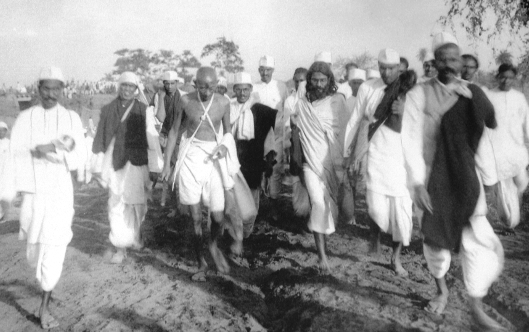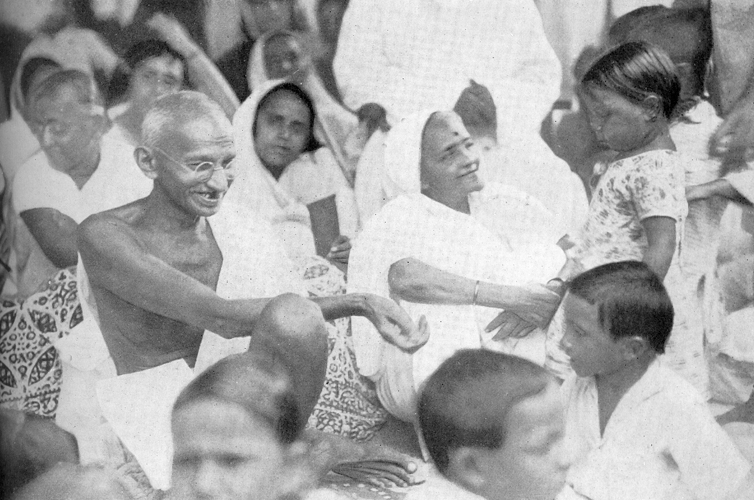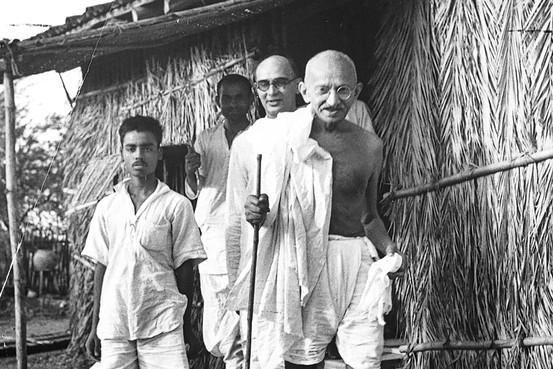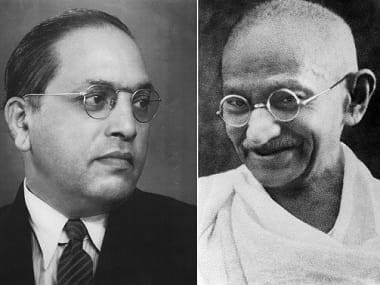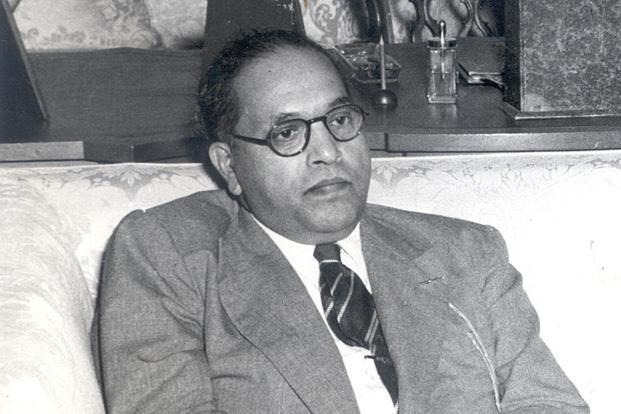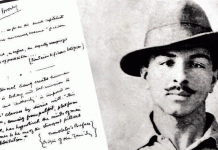Today is the birth anniversary of M.K. Gandhi but for many of us this day means nothing more than another holiday. This age seems to have nothing much to do with Gandhi other than just possibly seeing him as a state appropriated symbol. Perhaps this is an accurate time for all of us to ask ourselves what really is the relevance of Gandhi for us.
On this beautiful occasion we are invoking those who really understand the spirit of Gandhi beyond appropriation or utility.

Mahadev Desai
Mahadev Desai was an activist and nationalist writer; he was most famously known for being the personal secretary of Mahatma Gandhi. Desai was a young lawyer in Ahmedabad when he decided to join Gandhi and thereafter he became his most devoted secretary for 25 years, from 1917 to 1942. He was amongst the earliest supporters of Gandhi. Mahadev Desai was arrested along with Gandhi during all the nationalist revolts. The chief period of interest is the time Gandhi was incarcerated in the Yeravda Jail near Pune, Maharashtra from 1931 to 1934. Desai wrote most of his important works on Gandhi during this period. He was arrested on the morning of August 9 after Gandhi’s call to the British to Quit India and sent to the Aga Khan Palace for imprisonment. On August 15, 1942, Mahadev Desai died of a massive heart-attack at the age of 51.
Gandhi was shattered by Desai’s death at such a young age. Both Gandhi and his wife Kasturba Gandhi had seen him as their son, and his death was mourned by Gandhi’s supporters across the country.
Desai wrote several books on the non-violent struggles led by Gandhi in India, and a diary called Day to Day with Gandhi in nine volumes.
Besides writing a day-to-day diary, Desai also contributed regularly to Young India and Navajivan, two journals which Gandhi edited. During Gandhi’s incarceration, Mahadev took up the responsibility of the editor of Navajivan. He also translated Gandhi’s autobiography, The Story of My Experiments with Truth, into English.

Nirmal Kumar Bose
Bose was equally devoted to both the pursuit of science and the service of humanity. He was attracted to the national movement at a young age and this gave a distinctive stamp to his scientific and literary work. He also went to jail for nationalist activities during the movement. The greatest sin influence on Bose’s life was his association with Gandhi. Bose was inspired by Gandhi’s ideas on the creation of a new social order in India, and began by undertaking a detailed study of his writings. He was soon drawn closer to Gandhi who said to him that the only way of understanding a living man’s ideas was by seeing him put them into action. He also became Gandhi’s secretary and close companion .His association with Gandhi at Noakhli is well known. What impressed Bose most about Gandhi was his search for truth through experimentation. Gandhi was, in his view, the quintessential fieldworker, always ready to see and listen, and never drawing conclusions about a human situation without first experiencing it. Bose was very much influenced by Gandhi’s The Story of My Experiments with Truth.

Charlies F Andrews
In times when politicians systematically use religion as a tool to divide the nations, many would hardly believe that the closest companion in Mahatma Gandhi’s struggles against the British Empire was an English priest called Charles Freer Andrews also known as Charlie Andrews. The two were born in different countries, grew up in different cultures, and were taught two different religions by their parents. Yet, in the universal battle between good and evil they were united. Charlie Andrews died in Calcutta on April 5, 1940. Andrews’ Christian educational mission to India transformed him into one of the main architects behind the abolition of the Indian indentured labour system and a non-violent soldier in the fight for Indian independence. During the years that they spent together, Gandhi considered Andrews as “more than a blood brother”and the person to whom he was most deeply attached.

Miraben
Madeleine Slade was the daughter of an English aristocratic family. Her aristocratic existence took a life-changing turn after she read French novelist and essayist Romain Rolland’s 1924 biography of Gandhi. In this fascinating book the author had described Gandhi as the greatest personality of the 20th century. Slade was inspired by the principles of nonviolence and contacted Gandhi,asking if she could become his disciple and live in his ashram at Gujarat. Gandhi, while replying in the affirmative, cautioned her of the difficulties of such a life. However, Slade reached India in November 1925 and made India her home for the next 34 years. Upon her arrival at the ashram, Gandhi gave her the nickname Mirabehn Mirabehn often accompanied Gandhi on his tours and looked after his personal needs. She became one of Gandhi’s confidants and an ardent champion internationally for India’s freedom.

Abdul Ghaffar Khan
Abdul Ghaffar Khan was a political and spiritual leader. He was widely respected for his non-violent resistance to the British’s sway over the country and was known to be a devout follower of Mahatma Gandhi. Khan maintained a very close friendship with Gandhiji, who advocated adherence of non-violent methods for winning back freedom from the hands of the British. The two of them nurtured deep love and respect for one another and worked in alliance till the time India gained its independence in the year 1947. The leading Khudai Khidmatgar organization, of which Abdul Ghaffar Khan was reverent member, worked in close partnership with the Indian National Congress against the British Empire. On many occasions, when other members of the Indian National Congress disagreed with Mahatma Gandhi on any particular issue, Abdul Ghaffar Khan all throughout the years of their friendship, remained Gandhiji’s strongest supporter.
The New Leam has no external source of funding. For retaining its uniqueness, its high quality, its distinctive philosophy we wish to reduce the degree of dependence on corporate funding. We believe that if individuals like you come forward and SUPPORT THIS ENDEAVOR can make the magazine self-reliant in a very innovative way.

